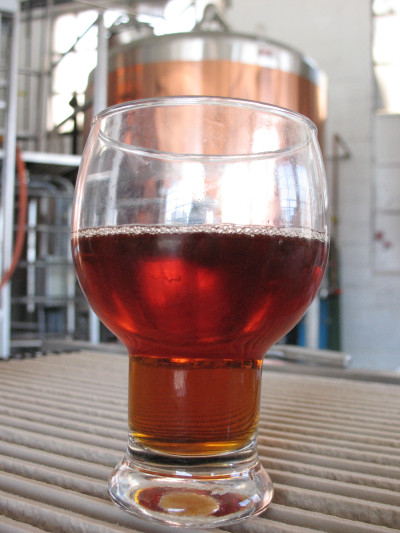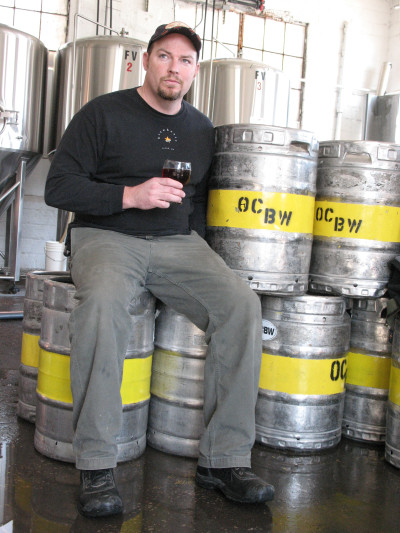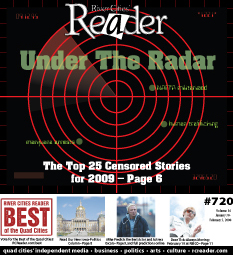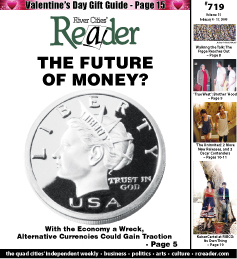 TV news station
TV news station
1. KWQC-TV6
2. WQAD Channel 8
3. WHBF CBS 4
Local media personality
1. Paula Sands, KWQC-TV6
2. Jessica Tighe, KWQC-TV6
3. Pat Leuck and Dani Howe, WLLR 103.7 FM
Local TV news anchor
1. Gary Metivier, KWQC-TV6
2. Jessica Tighe, KWQC-TV6
3. Jim Mertens, WQAD Channel 8
Local TV reporter
1. Fran Riley, KWQC-TV6
2. Jessica Tighe, KWQC-TV6
3. Chris Minor, WQAD Channel 8
 Best local TV reporter
Best local TV reporter
Fran Riley
Raised in Boston, KWQC-TV6 reporter Fran Riley says he grew up "wanting to be a play-by-play guy" for Major League Baseball. "I realized if I wasn't going to be the next Mickey Mantle, the next best thing would be the next Curt Gowdy." Those interested in a reporting career, meanwhile, would do well to strive to be the next Fran Riley. Voted "best local TV reporter" in the Reader's poll, Riley - who joined Davenport's KWQC team in 1994, after 14 years with Rock Island's WHBF - graduated with honors from Boston's Emerson College in 1975, and has been a broadcasting success ever since: Among his accolades are a United Press International Award for "best feature sports story" and "best sports reporting in Illinois," an Associated Press citation for "best feature reporting," and, with KWQC, two awards for religion-themed stories, given by the prestigious Wilbur Foundation. "Faith, and my beliefs as a Christian, are very, very important to me," says Riley, "so it means everything to have been able to do some of these stories and be recognized for them." With daily shooting assignments for Channel 6's newscasts, there's "not a lot of time to fool around," but Riley finds the demanding job intensely rewarding. "You get opportunities to meet some absolutely fascinating people," he says, and in covering such news events as last summer's flooding, "you also see things that really cause a lot of heartache in people's lives. I'm always amazed by people's determination and resiliency, and their desire to bounce back. It's rather uplifting." As for advice for those considering their own reporting careers, Riley says, "The more you can do in terms of versatility, whether it be news, sports, operating a camera ... the more you can offer a business, the more valuable you are to them." Thank you, Mr. Riley, for being valuable to Quad Citians for 28 years and counting. For more on Riley, visit the reporter's biographical page on KWQC.com.
- Mike Schulz
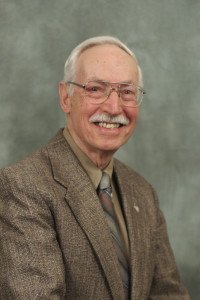 Ralph Troll spent 40 years teaching biology at Augustana College, and he only told the story there twice.
Ralph Troll spent 40 years teaching biology at Augustana College, and he only told the story there twice.
 You might notice that our Best of the Quad Cities looks a little different this year.
You might notice that our Best of the Quad Cities looks a little different this year. Best restaurant
Best restaurant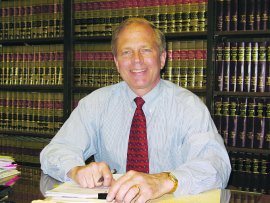 But you should take that with a grain of salt, as Schwiebert was appointed to Governor Pat Quinn's Taxpayer Action Board in March, and he attended its first meeting on Friday. Methinks that perhaps Schwiebert isn't the retiring type.
But you should take that with a grain of salt, as Schwiebert was appointed to Governor Pat Quinn's Taxpayer Action Board in March, and he attended its first meeting on Friday. Methinks that perhaps Schwiebert isn't the retiring type. Best local TV reporter
Best local TV reporter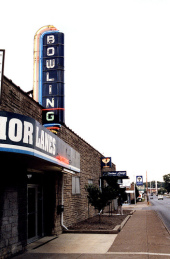 True story: During my first week of full-time Reader employment, our publisher - a truly radical guy - treated the staff to a late-afternoon get-together at Davenport's Bowlmor Lanes, voted the area's "best bowling alley." It was a great surprise and an even greater time, though you're probably already well aware of Bowlmor's charms, as the venue has been a Quad Cities institution now for nearly 70 years. "My grandfather built it in 1940," says owner Trent Lorfeld, who has worked in the family business since 1975. "You know, we just try to keep the place clean, and to keep it interesting for everyone." Mission more than accomplished. With brightly colored bowling murals above the 20 available lanes (brand-new lanes were installed last summer), and niceties such LCD screens, newly improved electronic scoring, and 10 big-screen TVs against the back wall for "media bowl" ("On Friday and Saturday nights, we'll play either sports or dance videos"), Bowlmor is a much-loved destination for all ages and talents - "families, neighborhood people, league bowlers, college kids ... everyone," says Lorfeld. (Bring your IDs, though, if you want to enjoy the warm, inviting lounge.) And whether you bowl your best in the morning, afternoon, night, or late night, Bowlmor's hours - opening at 9 a.m. most weekdays, and staying open until 2 a.m. on Friday and Saturday - make for ideal entertainment anytime, "especially in a down economy," says Lorfeld. "You can bring your family here and have fun and not spend a tremendous amount of money." Bowlmor Lanes is located at 2952 Brady Street, and more information is available by calling (563)324-3595.
True story: During my first week of full-time Reader employment, our publisher - a truly radical guy - treated the staff to a late-afternoon get-together at Davenport's Bowlmor Lanes, voted the area's "best bowling alley." It was a great surprise and an even greater time, though you're probably already well aware of Bowlmor's charms, as the venue has been a Quad Cities institution now for nearly 70 years. "My grandfather built it in 1940," says owner Trent Lorfeld, who has worked in the family business since 1975. "You know, we just try to keep the place clean, and to keep it interesting for everyone." Mission more than accomplished. With brightly colored bowling murals above the 20 available lanes (brand-new lanes were installed last summer), and niceties such LCD screens, newly improved electronic scoring, and 10 big-screen TVs against the back wall for "media bowl" ("On Friday and Saturday nights, we'll play either sports or dance videos"), Bowlmor is a much-loved destination for all ages and talents - "families, neighborhood people, league bowlers, college kids ... everyone," says Lorfeld. (Bring your IDs, though, if you want to enjoy the warm, inviting lounge.) And whether you bowl your best in the morning, afternoon, night, or late night, Bowlmor's hours - opening at 9 a.m. most weekdays, and staying open until 2 a.m. on Friday and Saturday - make for ideal entertainment anytime, "especially in a down economy," says Lorfeld. "You can bring your family here and have fun and not spend a tremendous amount of money." Bowlmor Lanes is located at 2952 Brady Street, and more information is available by calling (563)324-3595.